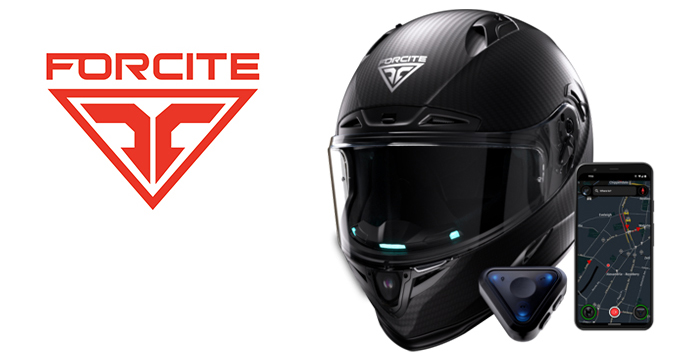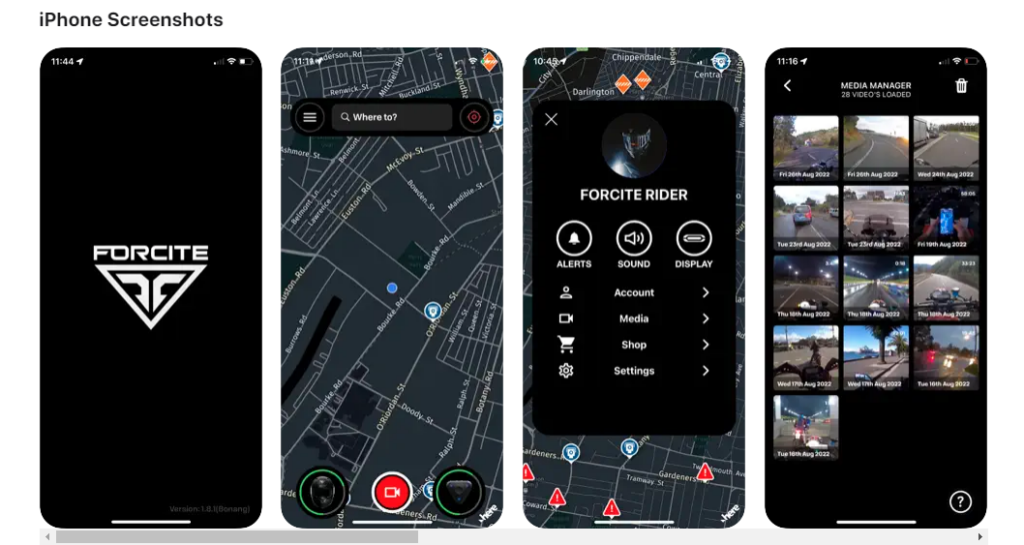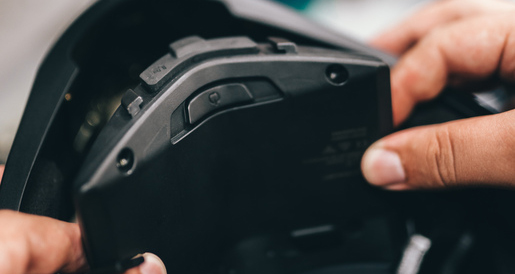New smart helmet coming to U.S.
The sound was crystal clear and only a bit muffled because the voice was broadcast from inside the helmet of Forcite’s CEO and Co-Founder Alfred Boyadgis.
“I’m doing about 50 kilometers an hour now and talking to you, so I don’t know how it sounds on your end, but we’ve got wind noise cancellation on the helmet,” he says, noting that the technology in Forcite’s new MK1S smart helmet is a bit of a “double-edged sword.” The more Forcite makes the helmet quiet through noise-canceling tech, the less outside world you can hear, so you can’t hear the bike.
“People like to hear the bike on video,” Boyadgis explains, “so I’m trying to work out a way to record a little bit from the phone’s mic with some exhaust noise and layer it on top of the video.”
But ironically, on our Zoom call, hearing his bike was impossible since he was taking the call from his LiveWire electric bike.

While other attempts to bring smart helmets to the motorcycling masses have failed to deliver much promise, according to Boyadgis, Forcite has been offering their high-tech lids in Australia and Europe and is now set to enter the U.S. market with Tucker Powersports.
“I think a lot of smart helmet tech that’s come and gone didn’t really deliver in the market, which is annoying for many people in the segment.” But with ECE helmet standards changing from 22.05 to 22.06, Boyadgis says the broader range of impact tests will affect helmets with integrated technology such as the MK1S.
Forcite has integrated features and technology into the helmet for a more streamlined, aerodynamic, and safe approach. “That’s part of our IP,” says Boyadgis. “It’s got batteries inside ceramic that won’t rupture upon impact, and the electronics module is removable. So if you have an impact, you can replace the helmet for about half price. And it’s also handy to have this stuff in the unit that you charge once, and just ride with it like I am today.”
Riders can set the helmet to record audio or video, using it like a dash cam that is always on. For the display, an array of LED lights sit below the rider’s peripheral vision and light up for turn-by-turn navigation.
“It’ll light green from the center and go to the left or the right for navigation, so you don’t have to look down at your phone, and you can keep your eyes on the road. It also has a police alert system, which pulls from the Waze API. And it has a speed camera, pothole alert, and other features,” he notes.

As for why Forcite didn’t go with a heads-up display like other smart helmet designs, “I found them distracting from the whole riding experience; I just didn’t like it.” Boyadgis says that Forcite’s customers agree. “We’ve sold 5,000 helmets so far and have about 3,700 in the field – people love them. The general feedback is they don’t want something distracting,” he says. “We wanted to create something that was still quite pure to the riding experience and didn’t distract you from anything.”
Boyadgis adds that the clip-on peripherals are inconvenient because they work independently of each other. “It’s two different things you must charge if you want to use it, and you must connect them to separate apps. You might not know if the camera’s running out of battery.”
Boyadgis also points out that clip-on devices can change the rotational velocity of the helmet and its performance. Forcite has neatly enclosed all of the peripherals into one package that can be charged at the same time and operate from a single app. And it is styled like a premium helmet that doesn’t look like a futuristic design from another dimension.
“The last thing we wanted to create was something that looked like a smart helmet with fins on it and all this space-age crazy stuff,” he explains. “We wanted a nice, slick, almost Italian-looking carbon fiber helmet.”
However, Boyadgis says they are building more than just the style of the helmet. “We’re considering participating in ASBK, and FIM certification is on the radar. We can record video and broadcast it. Also, the adventure sports category is booming.”
Boyadgis says that the most challenging part was designing the electronics, but now that it is done, adding the module to different shells is not as difficult.
Entering the U.S. market
In a recently announced deal, Forcite has partnered with Tucker Powersports to be the primary U.S. distributor for the smart helmet maker.
“I’m really excited about getting these out to U.S. customers,” says Boyadgis. “The DOT version of the helmet doesn’t have an internal sun visor, and it is slightly heavier because it has more carbon layers for the DOT test. The real plan is to get this in as many stores as possible that are premium stores in the USA.”
Boyadgis says they are also selling the helmets on their website and to drive traffic to some dealerships. They have a list of 8,000 enthusiast who have indicated an interest in the MK1S smart helmet that retails for $1,099.

“It’s really all guns blazing,” Boyadgis quips. “Riders and dealers will be able to see us at riding events, and we’ll do demos at certain dealerships.”
The biggest difference between Forcite and other smart helmet brands of the past is that it’s an actual product in production, and they go out to the customers to let them try it firsthand. “The proof is in the pudding when you try the helmet out,” he says.
According to Boyadgis, Forcite has to make it work because they are entirely backed by venture capital. “We’ve got a responsibility to our investors and the people that put money in to make this product work. It puts the fear of God into us to get it right. If we don’t deliver on the product, not only will the investor ruin us, but every single biker customer will be standing out front with a pitchfork!”
Some riders say they don’t want (smart) technology in their helmet and just want to focus on the ride, and Boyadgis is okay with that. “But, in this day and age, when so much happens in traffic, I highly recommend trying it,” he says. “If your customer just rides on the highway on the weekend, it’s probably not the helmet for them, but for riders who want more, the MK1S has all that functionality built-in in an easy-to-use way.”
With a limited supply at Tucker, Boyadgis notes that it’s first come, first served for dealers who want to order the MK1S. If you break down the cost of the components like an intercom system, camera, navigation and more, the MK1S is a bargain for customers shopping for the latest tech.
